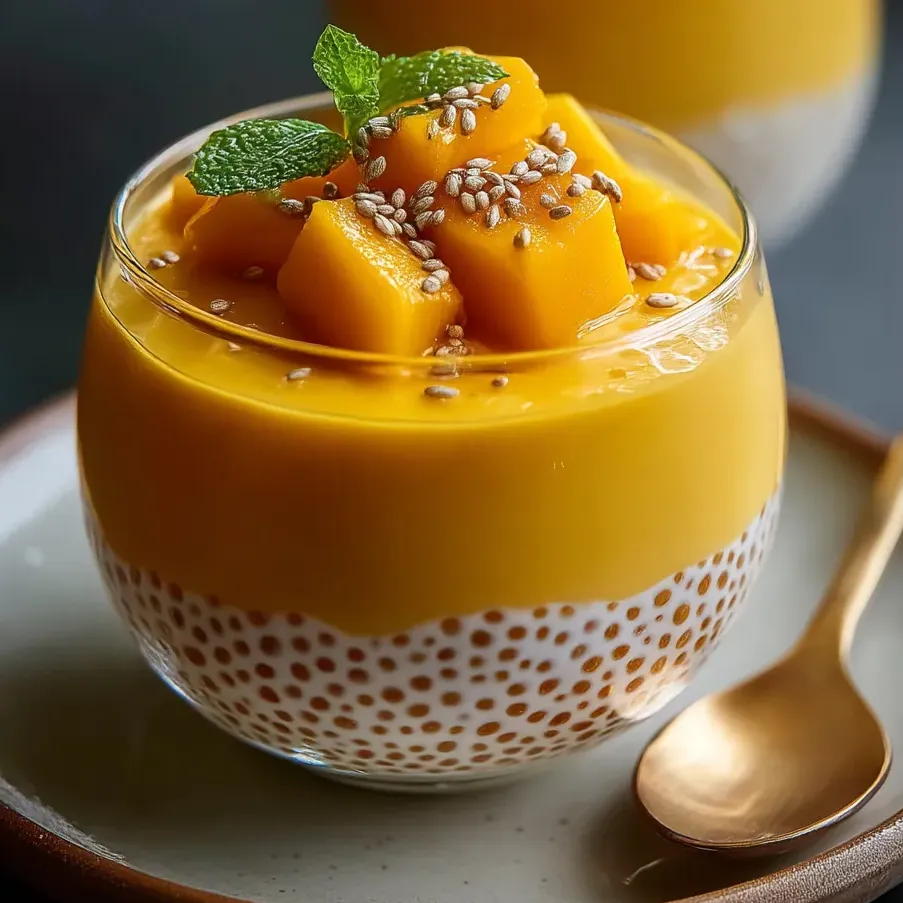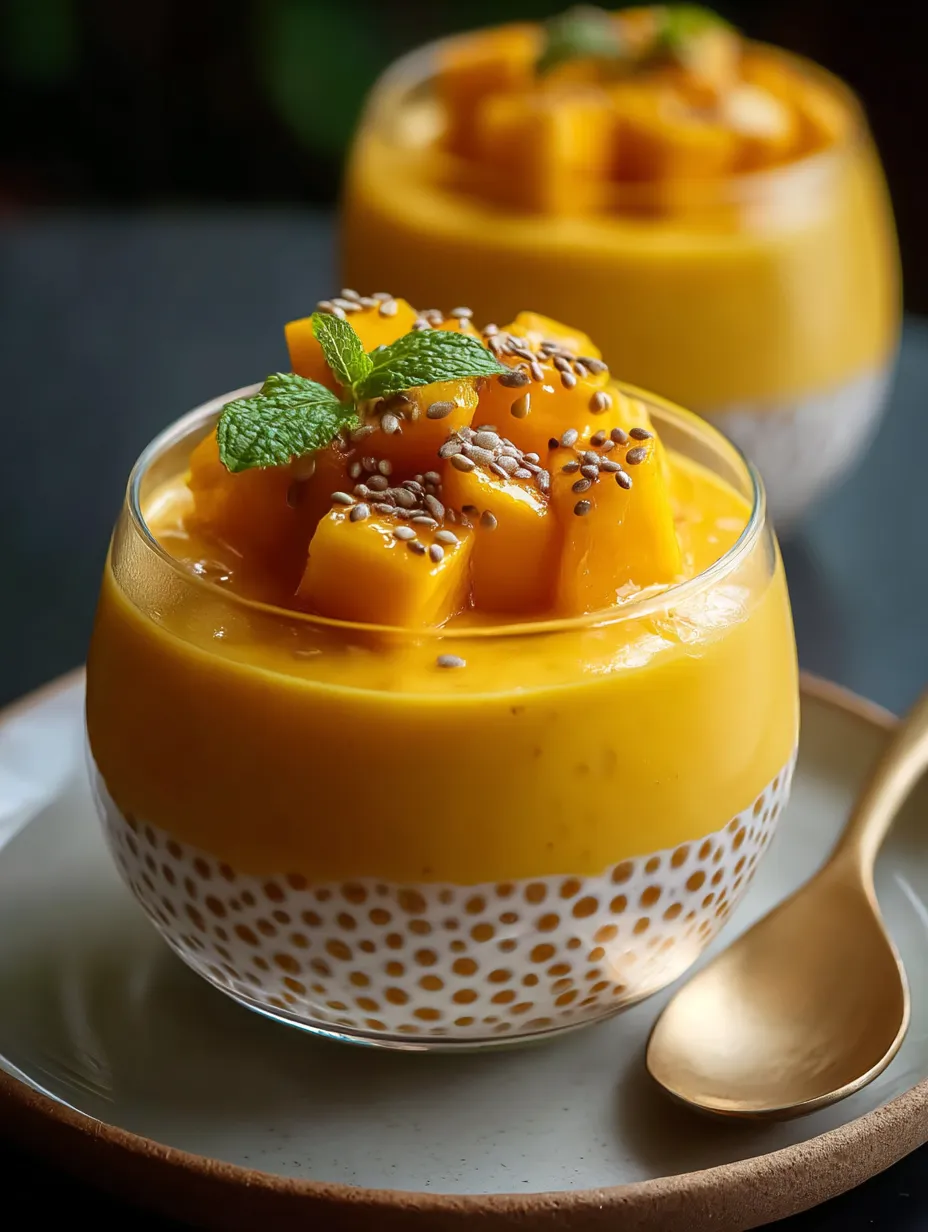 Save
Save
This mango sago dessert brings the perfect tropical escape to your home kitchen with its silky texture and bright flavors. I discovered this refreshing treat during my travels in Southeast Asia and have been perfecting my version ever since.
I first made this for a backyard gathering during a heatwave, and it quickly became the most requested dessert among my friends. The combination of sweet mangoes and creamy coconut milk creates a dessert that feels indulgent yet refreshing.
Ingredients
- Sago pearls: these tiny tapioca like pearls provide the signature chewy texture that makes this dessert unique
- Ripe mangoes: select fruits that yield slightly to pressure and smell fragrant at the stem for the best flavor
- Mango puree: intensifies the mango flavor throughout the dessert
- Coconut milk: use full fat for the richest creamiest result
- Condensed milk: provides sweetness and silky texture
- Evaporated milk: optional for adjusting consistency according to your preference
- Ice cubes: adds refreshing chill when served
Step-by-Step Instructions
- Cook the Sago:
- Bring a large pot of water to a rolling boil before adding the sago pearls. Cook for exactly 10 to 15 minutes, stirring occasionally to prevent sticking. You'll know they're done when they turn translucent with just a tiny white dot in the center. The resting period after cooking allows them to finish cooking through without becoming mushy.
- Prepare the Creamy Base:
- In a large mixing bowl, combine the coconut milk, condensed milk, and mango puree until completely smooth. Taste the mixture and adjust the sweetness by adding more condensed milk if needed. The base should be slightly sweeter than you want the final dessert to be, as the sago will dilute the flavor slightly.
- Combine and Chill:
- Gently fold the drained sago pearls into the mango coconut mixture, making sure they're evenly distributed. Transfer to your serving glasses or a large serving bowl and refrigerate for at least one hour. The chilling time allows the flavors to meld and the dessert to set to the perfect consistency.
- Serve and Garnish:
- Just before serving, top each portion with fresh mango cubes. For an extra special presentation, add a small drizzle of additional mango puree on top. The contrast between the smooth dessert and fresh mango pieces creates a delightful textural experience.

The secret to this dessert is using truly ripe mangoes. I wait until my mangoes are fragrant and slightly soft before using them, which brings out their natural honeyed sweetness. My family loves gathering around to help peel and slice the mangoes, making this dessert as fun to prepare as it is to eat.
Storage Tips
This mango sago dessert keeps beautifully in the refrigerator for up to three days. Store it in an airtight container to prevent it from absorbing other flavors. If the mixture thickens too much during storage, simply stir in a splash of milk or coconut milk before serving to restore the silky texture. The sago pearls may continue to absorb liquid, so this adjustment helps maintain the perfect consistency.
Creative Variations
You can easily adapt this recipe to showcase other tropical fruits. Try substituting half the mango with passion fruit, lychee, or pineapple for an interesting twist. For a more indulgent version, fold in a half cup of whipped cream just before serving for added richness. During hot summer months, I sometimes freeze portions in popsicle molds for a refreshing frozen treat that my children absolutely adore.

Serving Suggestions
Present this dessert in clear glasses to showcase the beautiful layers and colors. For an elegant dinner party, serve in martini glasses with small dessert spoons. This dessert pairs wonderfully with crisp cookies like almond thins or coconut wafers for textural contrast. For a complete tropical theme, serve after a meal of Thai curry or grilled seafood with citrus.
Cultural Context
Mango sago originated in Hong Kong and has become a beloved dessert throughout Asia. Traditional versions are often served in dim sum restaurants and dessert shops. The combination of tropical fruit and chewy pearls reflects the importance of textural contrast in Asian desserts. In many Asian cultures, mangoes symbolize prosperity and good fortune, making this dessert especially popular during celebrations and family gatherings.
Frequently Asked Questions
- → What are sago pearls and where can I find them?
Sago pearls are small, starchy spheres made from sago palm stems. They're similar to tapioca pearls but slightly different in texture. You can find them in Asian grocery stores, international food sections of supermarkets, or online specialty food retailers. Look for white, small pearls that are sometimes labeled as 'small tapioca pearls' if sago isn't available.
- → Can I make mango sago ahead of time?
Yes! Mango sago actually benefits from being made ahead as the flavors develop when chilled. You can prepare it up to 24 hours in advance, keeping the fresh mango topping separate and adding it just before serving. The sago may absorb more liquid during storage, so you might need to add a bit more coconut milk or regular milk when serving.
- → How can I tell when sago pearls are properly cooked?
Properly cooked sago pearls should be translucent with little to no white center. They should be chewy but not hard or gritty. If you bite into one, it should have a pleasant bouncy texture throughout. Avoid overcooking as they can become too soft and lose their characteristic chewiness.
- → What's the best way to select mangoes for this dessert?
Choose mangoes that yield slightly to gentle pressure, indicating ripeness. They should have a sweet, fragrant smell near the stem end. For this dessert, Alphonso, Ataulfo/Champagne, or Honey mangoes work particularly well due to their sweet flavor and smooth texture. If using for both puree and chunks, select mangoes that are ripe but still firm enough to hold their shape when cubed.
- → Can I make a dairy-free version of mango sago?
Absolutely! For a dairy-free version, replace the condensed milk with coconut condensed milk or a combination of maple syrup and additional coconut milk reduced to thicken. If the recipe calls for evaporated milk, simply use additional coconut milk or any plant-based milk of your choice. The result will be equally delicious with a more pronounced coconut flavor.
- → How long will mango sago keep in the refrigerator?
Mango sago will keep well in the refrigerator for 2-3 days when stored in an airtight container. The texture of the sago pearls may change slightly over time, becoming softer. For the best presentation and texture, consume within 48 hours of preparation and add fresh mango chunks just before serving.
